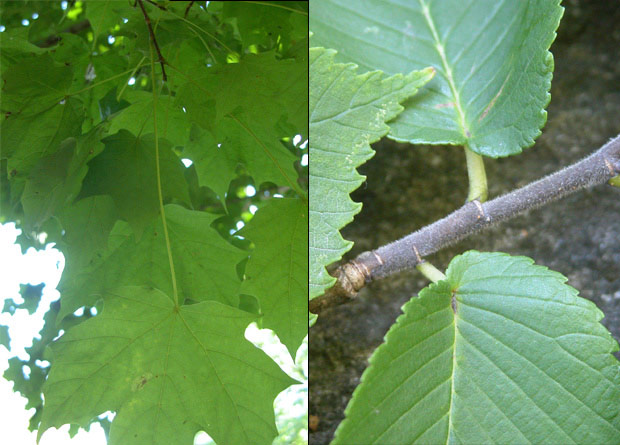Investment and cost-effectiveness
White birches grow in sunny sites; beeches, in shady ones. What they share, however, is a short stalk (petiole) – the part of the leaf that attaches it to the branch – because their light conditions are stable. To position their leaves to absorb a maximum amount of light, they modify the orientation of their branches, a strategy representing a long-term investment.
Sugar maples, on the other hand, which grow in places that can be either very sunny or very shady, use a different tactic altogether. Using a long petiole demands more resources, but the tree can better position its leaves in order to adapt to the light conditions at a given moment.

1. Acer saccharum / 2. Ulmus thomasii
© Jardin botanique de Montréal (Lise Servant)
© Jardin botanique de Montréal (Lise Servant)




